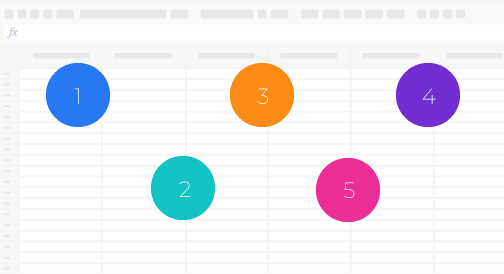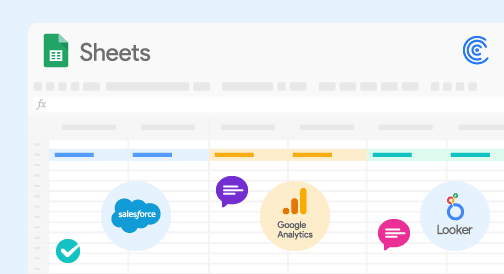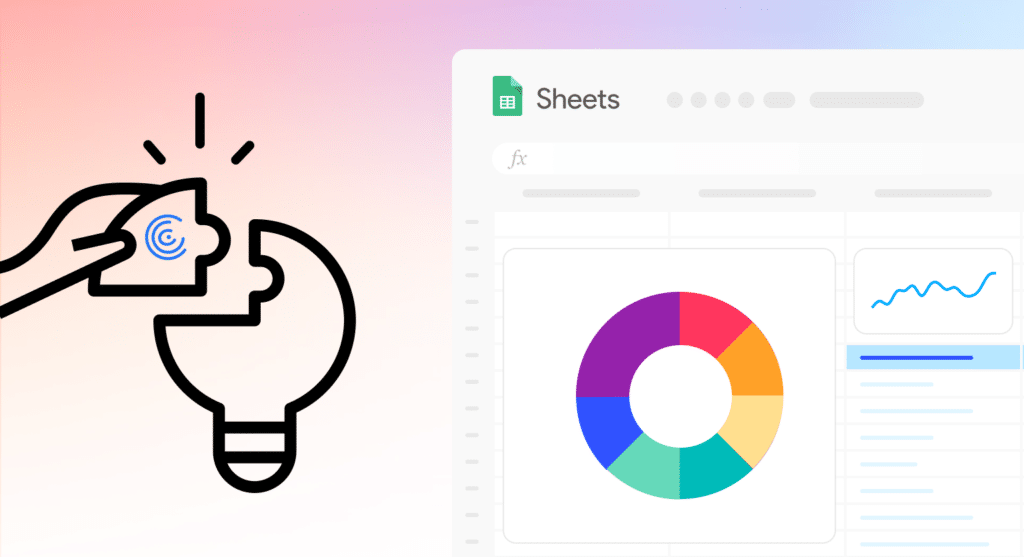Spreadsheets are one of the most ubiquitously used tools in the world. If you think about how frequently they’re used across organizations, this shouldn’t be too surprising. What is surprising is the lack of connectivity for such an important and widely used tool.
Despite their many advantages, spreadsheets are difficult to operationalize because they’re disconnected from the rest of your company data. This can lead to costly problems for companies in terms of lost time, data accuracy and innovation. Connected spreadsheets aim to fix this, alleviating a majority of the current spreadsheet pain points and transforming them into a powerhouse tool.
Let’s take a look at 5 of the most common spreadsheet pain points facing users today, and how teams can solve for them.
1. Manual exports
Oh, manual exports. How often have we all been subjected to their torture? Unsurprisingly to anyone who has done it, exporting data manually is incredibly inefficient. It’s basically a perpetual time suck and leaves your data susceptible to an onslaught of issues from formatting errors to inaccuracies. It’s all too common to see data being manually exported from business applications (like Salesforce or HubSpot), databases (like MySQL), data warehouses (like Snowflake or Amazon Redshift) and even BI Tools (like Looker or Tableau). Despite all of this, manual exports are still the industry standard for spreadsheet users when it comes to accessing and analyzing data from company systems.
Use connected spreadsheets to eliminate the need for manual exports by syncing data directly from your systems, saving you time and future headaches. Any data across your company systems is just a few clicks away, all from your spreadsheet.
2. Stale data
The moment you export data to a spreadsheet, it becomes stale and difficult to reuse. This often leads to continual exports and work that ends up getting thrown away. Stale data is also a big reason that people tend to lose trust in the data. It’s difficult to determine whether a spreadsheet is leveraging the latest data. Many people will spend hours tracking down the creators & editors of a spreadsheet or trying to decode their ‘import’ functions in Google Sheets. Wouldn’t it be nice if this problem just magically disappeared?
Connected spreadsheets hook up directly to your data sources and allow you to work with the most up to date data. You can refresh data any time you need it. If you have a weekly forecast report, set it to update the night before your forecast meeting. If you want the latest customer data throughout the day, set it to update every hour. In short? You will never have to worry about stale data again.
3. Data discrepancies
There’s one thing that’s even worse than stale data — inaccurate data. Unfortunately, data discrepancies are a common spreadsheet pain point we’ve all been subjected to. The more manual a process is, the more susceptible it is to human errors. Many teams go through the daily, weekly or monthly process of manually inputting data into a spreadsheet. As more data is added, there is greater risk of inaccuracies. Business and technical teams alike need a better way to manage this process.
By directly connecting to your data sources, connected spreadsheets eliminate the need for teams to manually input data in a spreadsheet — especially the ones most likely to cause errors. Automate this process so you only have to do this work once. Give your team back their precious time while remaining confident that the data is accurate.
4. No single source of truth
“What are your data sources?” Most of us have heard or perhaps even been on the receiving end of this question. And for good reason. With so many different data analyses floating around organizations, it’s hard to know which ones to trust. Having a single source of truth is essential to ensuring your company’s data is both accurate and secure. But the reality is, you can’t achieve this with spreadsheets in their disconnected format.

Stop exporting data manually. Sync data from your business systems into Google Sheets or Excel with Coefficient and set it on a refresh schedule.

Connected spreadsheets sync directly with your business applications, data warehouse or BI product so you know the source of the data you’re analyzing. If you have metrics that are defined centrally by your data team, leverage those so you know you’re working off the right data. If you have a Salesforce report that captures your latest opportunity data, be confident knowing you’re connected directly to it.
5. Performance
A major constraint that impacts spreadsheet users is the performance on large data sets. Either the data set is too large to use in a spreadsheet, or it’s large enough that the performance is severely impacted. For example, when using native spreadsheet filters in Google Sheets, the rows are hidden but the data is still present. This creates limitations for many use cases where larger data sets are needed to glean insights. Examples of this may include large customer data sets in the tens or hundreds of thousands of rows. Product data often grows quickly to a size that makes it difficult to use in a spreadsheet.
Connected spreadsheets allow you to work with only the data you need to do your analysis. Dynamically filter data at the source so spreadsheets remain performant. If you need additional data down the road, you can easily add it anytime you need it. From there, you can use native spreadsheet filters to be able to look at different cuts of the data.
Final Thoughts
Spreadsheets are one of the most popular software tools for a reason — they grant users the ability to become data analysts. But any good data analyst knows that your analysis is only as good as the underlying data you’re using. All of the above spreadsheet pain points leave users with some serious data integrity vulnerabilities.
![]()





